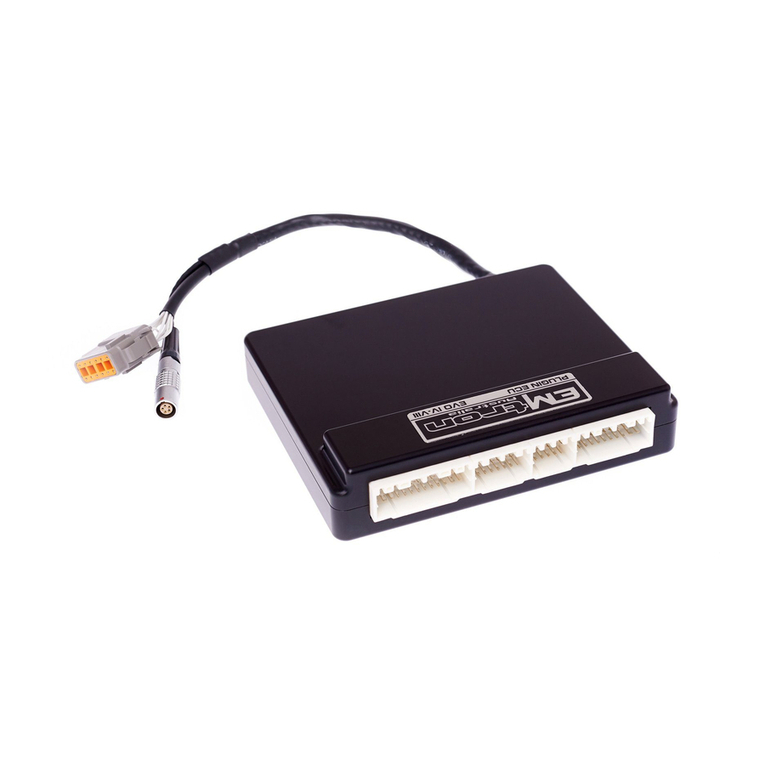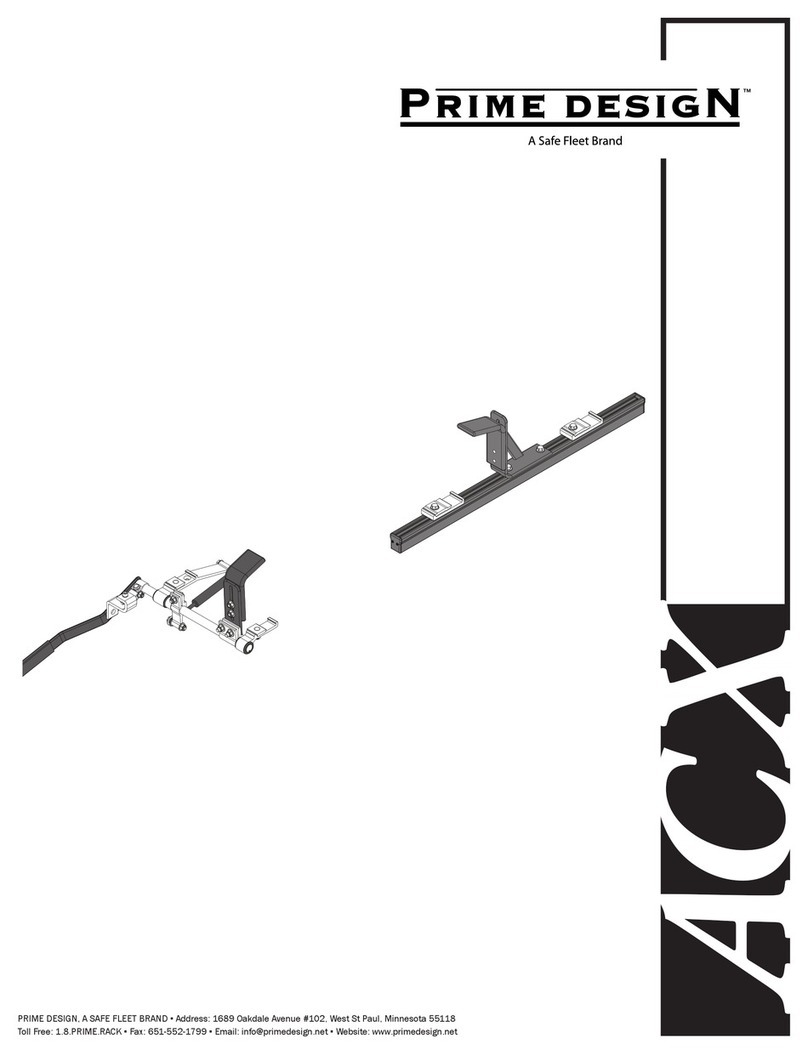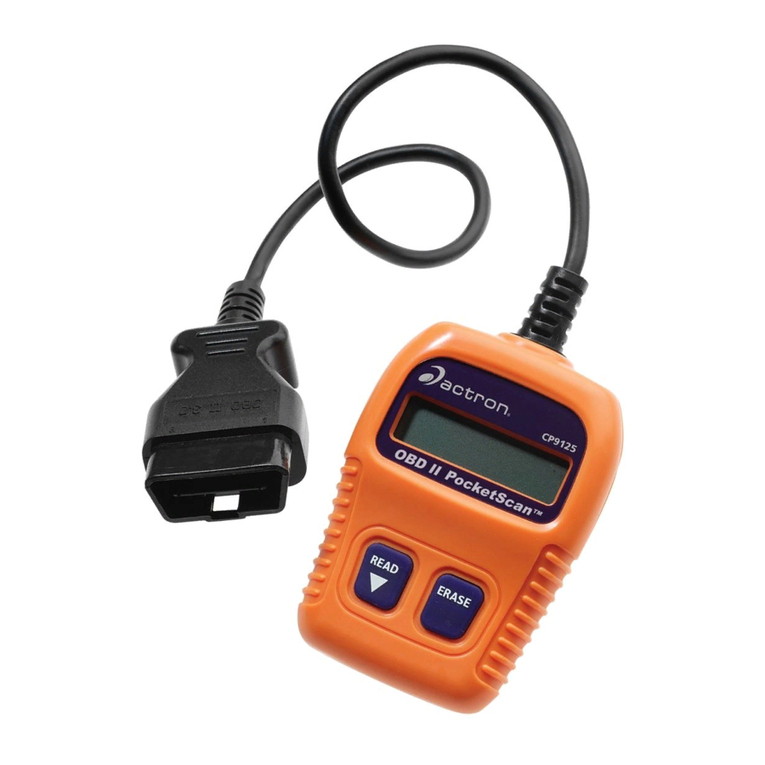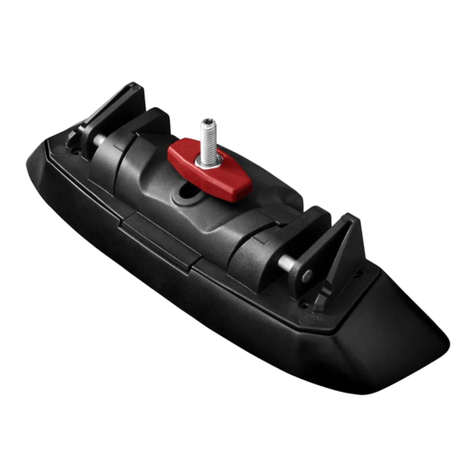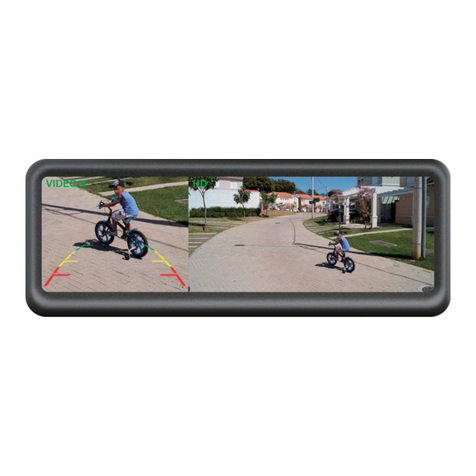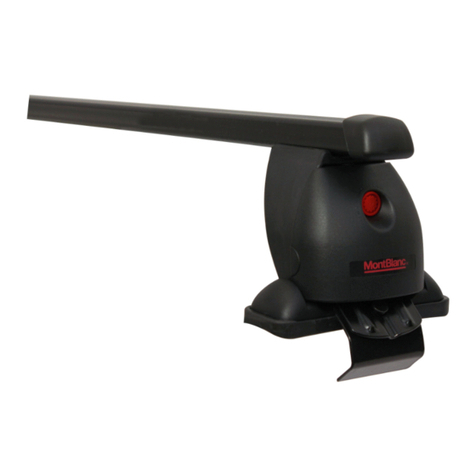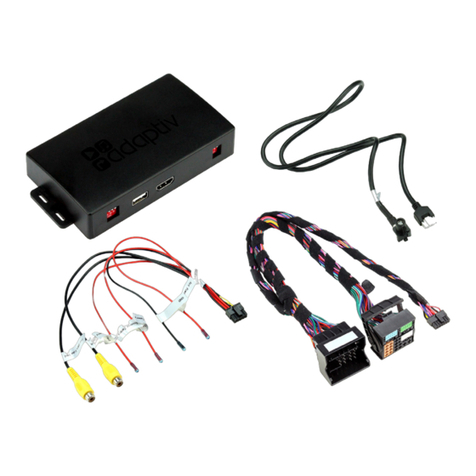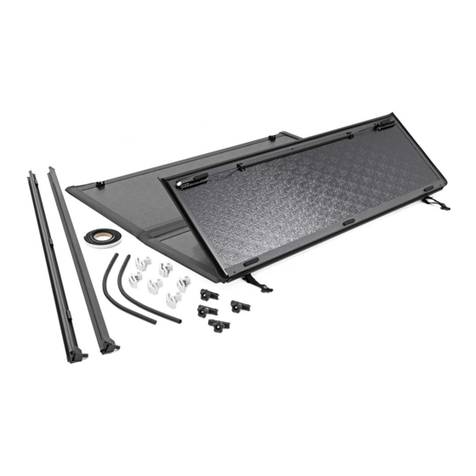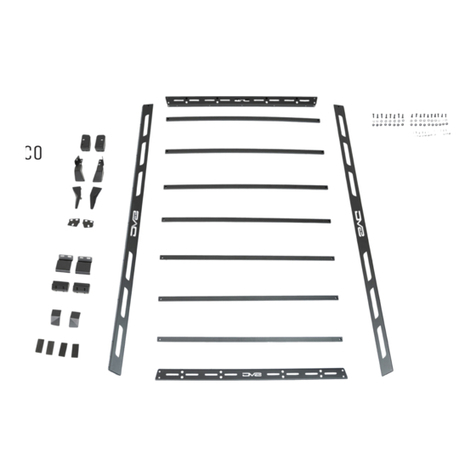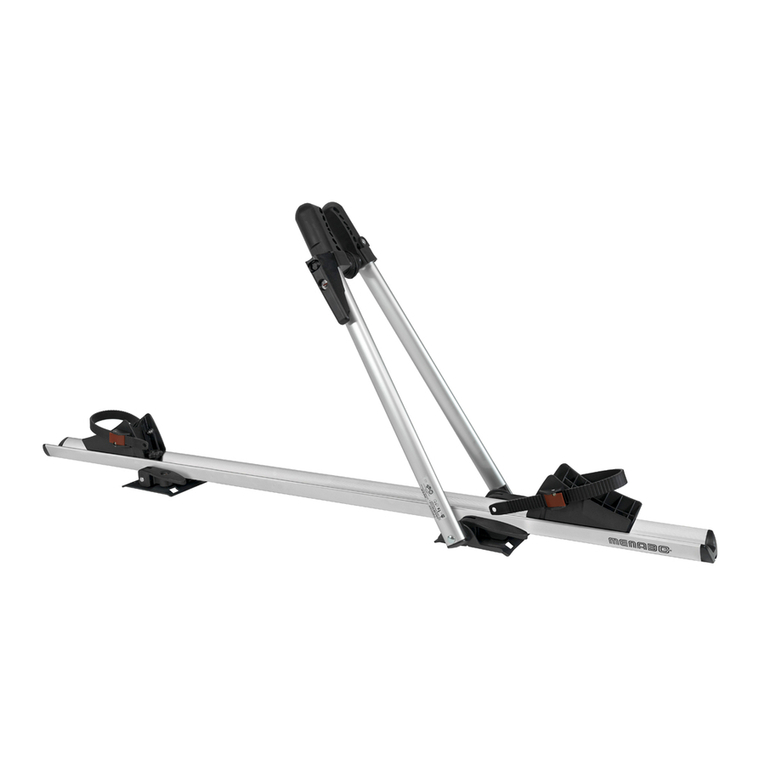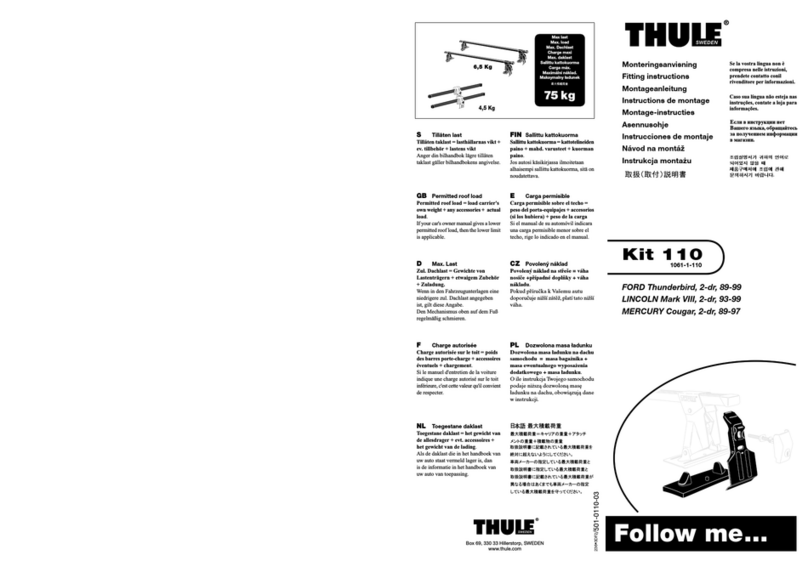Globalstar GPDK-1700 User manual

Globalstar User Manual
Globalstar GPDK-1700

by Spirit Wireless
Globalstar
Spirit Wireless
GPDK-1700 Globalstar
Portable Docking Kit
User Manual

This manual is based on the production version of the QUALCOMM Globalstar GIK-1700 Globalstar
Installation Kit converted to a GPDK-1700 SPIRIT WIRELESS Globalstar Portable Docking Kit. Software
changes may have occurred after this printing.
Table of Contents
Introduction
Features
Safety precaution when using the kit
Safety precautions when using the GSP-1700
Satellite Phone
Exposure to radio frequency signals
Antenna care
Phone operation
Driving
Electronic devices
Vehicles and vessels
Posted facilities
For vehicles equipped with air bag
Battery care

Other safety issues
Components
Globalstar Portable Docking Kit standard components
Component parts
Globalstar Portable Docking Kit
Speaker
Hands-free microphone
Cigarette Lighter Adapter
Exterior Antenna
Antenna cables
Globalstar Portable Docking Kit optional accessories
Optional accessories (not included in kit)
Privacy headset
Globalstar Data Cable
Globalstar marine antenna
Operation
Using the phone in a vehicle
Attaching the phone to the Globalstar Portable Docking Kit
Turning on the phone and kit
Charging the phone battery
Hands-free mode
When you use hands-free mode
Adjusting speaker volume
Connecting to a personal computer
Privacy headset operation
Troubleshooting

Introduction
Before using your Globalstar Portable Docking Kit, please read this manual thoroughly and retain it for
future reference.
Features
The Globalstar Portable Docking Kit (GPDK-1700) allows your Globalstar GSP-1700 satellite phone to be
used as a mobile phone in your vehicle.
With this kit, you can:
•Talk without picking up the phone.
•Obtain unlimited talk time using DC current supplied by your vehicle.
•Charge the phone’s battery.
Safety precautions when using the kit
When using your phone in a vehicle or boat, please observe the following rules.

!! Caution
Failure to follow these instructions may lead to serious personal injury and possible property damage.
•Secure the phone in your vehicle to prevent personal injury and damage to the phone in the
event of an accident.
•When attaching or detaching the exterior antenna to the kit with the antenna cable, disconnect
all power to the phone and the kit. Note that DC voltage is present in the central conductor of
the antenna cable (45-C6162-1).
•Detach the phone from the kit and disconnect power interface cable to the kit when jump-
starting the vehicle or re-charging the vehicle battery. Jump-starting may cause the fuse in the
cigarette lighter adapter to burn out.
Safety precaution when using the GSP-1700 Satellite Phone
Exposure to radio frequency signals
Your wireless handheld portable telephone is a low power radio transmitter and receiver. When it is on,
it receives and also sends out radio frequency (RF) signals.
In August, 1996, the Federal Communications Commissions (FCC) adopted RF exposure guidelines with
safety levels for hand-held wireless phones. Those guidelines are consistent with the safety standards
previously set by both U.S. and international standards bodies:
•ANSI/IEEE C95.1-1999 Standard (1)
•NCRP Report 86 (1986) (2)
•ICNIRP (1998) (3)
•IRPA (1991) Guidelines on Protection Against Non-ionizing Radiation (4)
The phone and the kit are designed to comply with established ANSI, FCC, and international safety
standards for safe levels of human exposure to RF energy. Nonetheless, RF field intensity at the surface
of the transmitting antenna is fairly high. Maintaining a minimum line-of-sight separation of 25 cm (10
inches) between the transmitting kit antenna and all personnel will ensure Permissible Exposure (MPE)
limits are not exceeded. This satisfies the MPE limits mandated by the FCC in 47 CFR Ch. 1 (2006
Edition), part 1, paragraph 1.1310 and defined in the ANSI/IEEE C95.1-999 standard, and also satisfies
the slightly more-stringent European and international exposure limit recommendations of IRPA (1991)
and ICNIRP (1998).
1. American National Standards Institute
2. National Council on Radiation Protection and Measurements
3. International Commission on Non-Ionizing Radiation Protection
4. Internal Radiation Protection Association

Antenna care
Use only the supplies or an approved replacement antenna. Unauthorized antenna, modifications, or
attachments could damage the phone and may violate FCC regulations.
Phone operation
Hold the phone as you would any other telephone with the antenna pointed up and over your shoulder.
Tip
For your phone to operate most efficiently:
•Extend you antenna fully.
•Do not touch the antenna unnecessarily when the phone is in use. Contact with the
antenna affects call quality and may cause the phone to operate at a higher power level
than otherwise needed.
Driving
In the areas where you drive, always obey the local laws and regulations on the use of wireless
telephones.
If using your phone while driving, please:
•Give full attention to driving – driving safely is your first responsibility.
•Use hands-free operation, if available.
•Pull off the road and park before making or answering a call if driving conditions require you to
do so.
Electronics devices
Most modern electronic equipment is shielded from RF signals. However, certain electronic equipment
may not be shielded against the RF signals from your wireless phone.
Pacemakers
The Health Industry Manufacturers Association recommends that a minimum separation of six inches
(15 cm) be maintained between a handheld wireless phone and a pace maker to avoid potential
interference with the pacemaker. These recommendations are consistent with the independent
research by and recommendations of the Wireless Technology Research.
Persons with pacemakers:
•Should ALWAYS keep the phone more than six inches from their pacemaker when the phone is
turned on.
•Should not carry the phone in a breast pocket.
•Should use the ear opposite the pacemaker to minimize the potential for interface.
•If you have any reason to suspect that interference is taking place, turn your phone off
immediately.

Hearing aids
Some digital wireless phones may interface with some hearing aids. In the event of such interference,
you may want to consult your service provider (or call the customer service line to discuss alternatives).
Optional for each phone manufacturer.
Other medical devices
If you use any other personal medical device, consult the manufacturer of your device to determine if it
is adequately shielded from external RF energy. Your physician may be able to assist you in obtaining
this information.
Turn your phone off in health care facilities when any regulations posted in these areas instruct you to
do so. Hospitals or health care facilities may be using equipment that could be sensitive to external RF
energy.
Vehicles and vessels
RF signals may affect improperly installed or inadequately shielded electronic systems in motor vehicles.
Check with the manufacturer of its representative regarding your vehicle. You should also consult the
manufacturer of any equipment that has been added to your vehicle.
Posted facilities
Turn you phone off in any facility where posted notices require you to do so.
Aircraft
FCC regulations prohibit using your phone while in the air. Switch off your phone before boarding an
aircraft.
Blasting areas
To avoid interfering with blasting operations, turn you phone off when in a “blasting area” or in areas
posted: “Turn off two-way radio”. Obey all sign and instructions.
Potentially explosive atmospheres
Turn your phone off when in any area with a potentially explosive atmosphere unless you know with
certainty that you are carrying an “intrinsically safe” phone. Obey all signs and instructions. Sparks in
such area could cause an explosion or fire resulting in bodily injury or even death.

Areas with a potentially explosive atmosphere are often but not always clearly marked. They include
fueling areas such as gasoline stations; below deck on boats; fuel or chemical transfer or storage
facilities; vehicle using liquefied petroleum gas (such as propane or butane); areas where the air
contains chemicals or particles, such as grain, dust, or metal powders; and any other area where you
would normally be advised to turn off your vehicle engine.
For vehicle equipped with an air bag
An air bag inflates with great force. DO NOT place objects, including both installed or portable wireless
equipment, in the area over the air bag or in the air bag deployment area. If in-vehicle wireless
equipment is improperly installed and the air bag inflates, serious injury could result.
Battery care
The phone’s battery stores a large amount of energy when fully charges. If the battery is punctured,
crushed, severely overheated, or charged in a non-approved charger, this energy can be released
suddenly and result in potential injury.
•Do not overheat the battery by leaving it on a heater or in the sun.
•Do not dispose of the battery in a trash compactor or incinerator.
•Only use approved charging accessories. Discontinue use of any battery if it becomes damaged.
Other safety issues
In order to avoid the potential for confusing the phone as a weapon, the phone features a distinctive
orange dot on the top of the antenna.
•Tis orange dot is a convention used by manufacturers of various devices and is familiar to safety
officers in the country of manufacture and other countries.
•Do not remove or cover the dot, and avoid using or handling the phone is a threating manner or
so as to suggest that the phone is a weapon.
Components
Here is a list of components used in your portable docking kit.
Component parts
CV90-C6029-1 Globalstar Cradle
CV90-C6030-1 Speaker
330-12363-0156 Hands-Free Microphone
45-C6162-1 Antenna Cable
GAT-17MP Patch Antenna
GAT-17HX Quadri-filar Helix Antenna

SW-17BCB Ballistic Cloth Bag
SW-17EC Equipment Chassis
SW-17CPA Car Power Adapter
Component parts
Globalstar Portable Docking kit
The cradle (CV90-C6029-1) securely holds the Globalstar phone, interfaces to the vehicle’s power, and
houses the electronic circuit for the kit. It provides and controls the supply voltages for the accessories
and the charge current for the phone.
Speaker
The speaker (CV90-C6030-1) connects to the speaker jack.
Hands-free microphone
The hands-free microphone (80-C6061-1), a unidirectional mouse-style microphone, connects to the
cradle’s microphone jack.
Antenna Cables
The antenna cable consists of a pair of paired coaxial cables (45-C6162-1) that connect the exterior
antenna to the kit. Use only the antenna cables that come with your kit when connecting the exterior
antenna. DO NOT CUT OR MODIFY THE ANTENNA CABLES.
! Caution
DC voltage exists in the central conductor of the antenna cable.
Globalstar Portable Docking Kit optional accessories
GHS-1700 Privacy Headset
GDC-1700 Globalstar Data Cable
Marine Antenna
GIK-32-EXTEND 32’ Extended Cable for Active Antenna
GIK-47-EXTEND 47.5’ Extended Cable for Active Antenna
GIK-86-EXTEND 86’ Extended Cable for Active Antenna

Operation
Using the phone in a vehicle
Attaching the phone to the Globalstar Portable Docking Kit
1. Remove the kit connector cover label from the back of the phone.
Insert line art drawing
2. Remove rubber plug from the connector at the bottom of the phone. Rotate rubber plug
toward antenna.
3. Insert the connector on the bottom of the cradle into the connector on the phone.
4. Push the phone down and back until it locks into place. You should hear a click.
5. To remove the phone, press the release button at the top of the cradle, and gently remove the
phone.
6. Replace the rubber plug in the connector.
Insert line art drawing on page 18 of the GIK-1700 User Manual
! Caution
Do not pull the phone out of the cradle without first pressing the release button. If you do so,
you could damage the phone and the cradle.

Turning on the phone and kit
Prior to plugging the CPA (car power adapter) into the vehicles power source, place the patch antenna
out on the roof of the vehicle to avoid unnecessary RF exposure. Once the antenna is safely attached to
the roof, insert the Car Power Adapter into the vehicles power receptacle. If the phone is already in the
portable docking kit cradle, the phone will turn on automatically. If you insert your GSP-1700 into the
cradle after providing power to the GPDK-1700, the GSP-1700 will power up as soon as it is in the cradle.
Note
If you turn off the vehicle’s ignition during a call, the portable docking kit may or may not stay on.
Continuous power must be supplied to the portable docking kit by the vehicles power receptacle.
Charging the phone battery
When the phone is in the docking kit and the CPA is in a power receptacle, the kit will charge the
phone’s battery.
Hands-free mode
The portable docking kit allows you to use your phone more efficiently and safely while driving in your
vehicle. When the phone is properly attached to the cradle in the kit and powered up, you can speak in
the microphone and listen to the other party through the speaker while keeping both hands on the
wheel.
! Caution
You should stop the vehicle in a safe place before attempting to dial a number. If you must talk while
the vehicle is moving, use the hands-free microphone so that you can always concentrate on traffic
conditions.
If you turn off the vehicle’s ignition during a call, the call may be interrupted. It ultimately will depend
whether the vehicle’s power receptacle has power when the engine is turned off.
When you use hands-free mode
•It is recommended that you use one-touch dialing or speed dialing to simplify key operations.
See the QUALCOMM Globalstar GSP-1700 Phone User Manual.
•Exercise extreme caution with traffic conditions.
Adjusting speaker volume
You can use the volume keys on the side of the phone to adjust the speaker volume. You can:
•Adjust the phone speaker volume while on a call.
•Adjust the ringer volume when the phone is not on a call.
Note

You can also use menus to adjust the volume. Refer to the phone user manual.
Connecting to a personal computer
Connecting a Globalstar data cable (GDC-1700) from your computer or other device to the data port of
the kit allows the phone to send and receive data. See Component parts, page ?.
Note
You cannot use the phone to talk while sending and receiving data.
Privacy Headset
Privacy headset operation
Setting up the headset
Before start to drive:
1. Remove rubber plug from the headset jack in the left side of the phone. Rotate rubber plug
toward the antenna.
2. Plug the privacy headset into the headset jack on the phone.
3. Place the headset over your ear.
4. Speak in the direction of the headset microphone instead of the Hands-Free microphone. You
will hear the other party through the earplug.
5. Use the volume keys or Preferences menu on your phone to adjust the volume of the earplug
when you on a call. See the user manual.
Using the headset
To make a call with the headset:
1. Dial the desired number on the keypad of your phone.
2. Press (insert send button line art drawing)
When you use the headset, the speaker and microphone are muted, and you can speak in privacy.
To receive a call with the headset:
•When the phone rings, press any key except (insert line art drawing of “end” button). See the
phone user manual for information on the AnyKeyAnswer option.
To end a call with the headset:
•Press (insert line art drawing of “end” button)
To switch from the headset to hands-free mode:
•Unplug the headset from the headset jack when you are not driving.
Troubleshooting
If you have problems using the portable docking kit, look at these possible solutions before calling your
service provider or authorized Globalstar agent.
Table 1. Error messages

Message Recommendation
Antenna not found Re-check phone connection to the cradle,
Re-check cable connections between the kit,
Antenna cable, and antenna.
MCU/Communication Re-check phone connection to the cradle.
Error
Kit connected No troubleshooting necessary.
No message when Re-check phone connection to cradle. Verify
Phone is place in kit. Power is supplied to cradle, either via the
Power interface cable or the car power adapter.
Table 2. Other problems.
Problem Recommendation
Speaker not working Verify speaker connection to cradle. Verify
volume setting on phone is loud enough to
hear speaker.
Microphone is not Verify microphone connection to creadle.
working Verify phone is not set to “mute” during a call.
After charging/ Replace fuse in Car Power Adapter. Unscrew end
Jumping vehicle of adapter. Pull fuse out. Replace fuse and screw
battery, phone no end of plug back into place.
longer works
Index
A
adjusting headset earplug volume
adjusting ringer volume

adjusting speaker volume
air bag safety
antenna cables
DC voltage
antenna
cable
exterior
patch
Quadri-filar helix
safety
antenna cables
DC voltage
B
battery
charging
C
cables
antenna
power interface cable
Car Power Adapter
components
D
data cable, Globalstar
dialing
one touch
speed
driving safely
E
electronic devices
exterior antenna
F
fuse
G
Globalstar
data cable
Globalstar Portable Docking Kit
attaching the phone
cradle

features
optional accessories
release button
standard components
turning off
turning on
H
hands-free mode
hearing aids
J
jumping-starting your vehicle
safety precautions
M
medical devices
microphone
connecting
O
operation
optional accessories
P
pacemakers
patch antenna
privacy handset
operation
privacy headset
adjusting earplug volume
Q
Quadri-filar helix antenna
R
radio frequency
recharging vehicle battery
safety precautions
S
safety
air bags
aircraft

antenna
blasting areas
driving
electronic devices
explosive atmospheres
hearing aids
hospitals
medical devices
pacemakers
precautions
radio frequency
speaker
connecting
T
Troubleshooting
Error messages
Other problems
Table of contents
